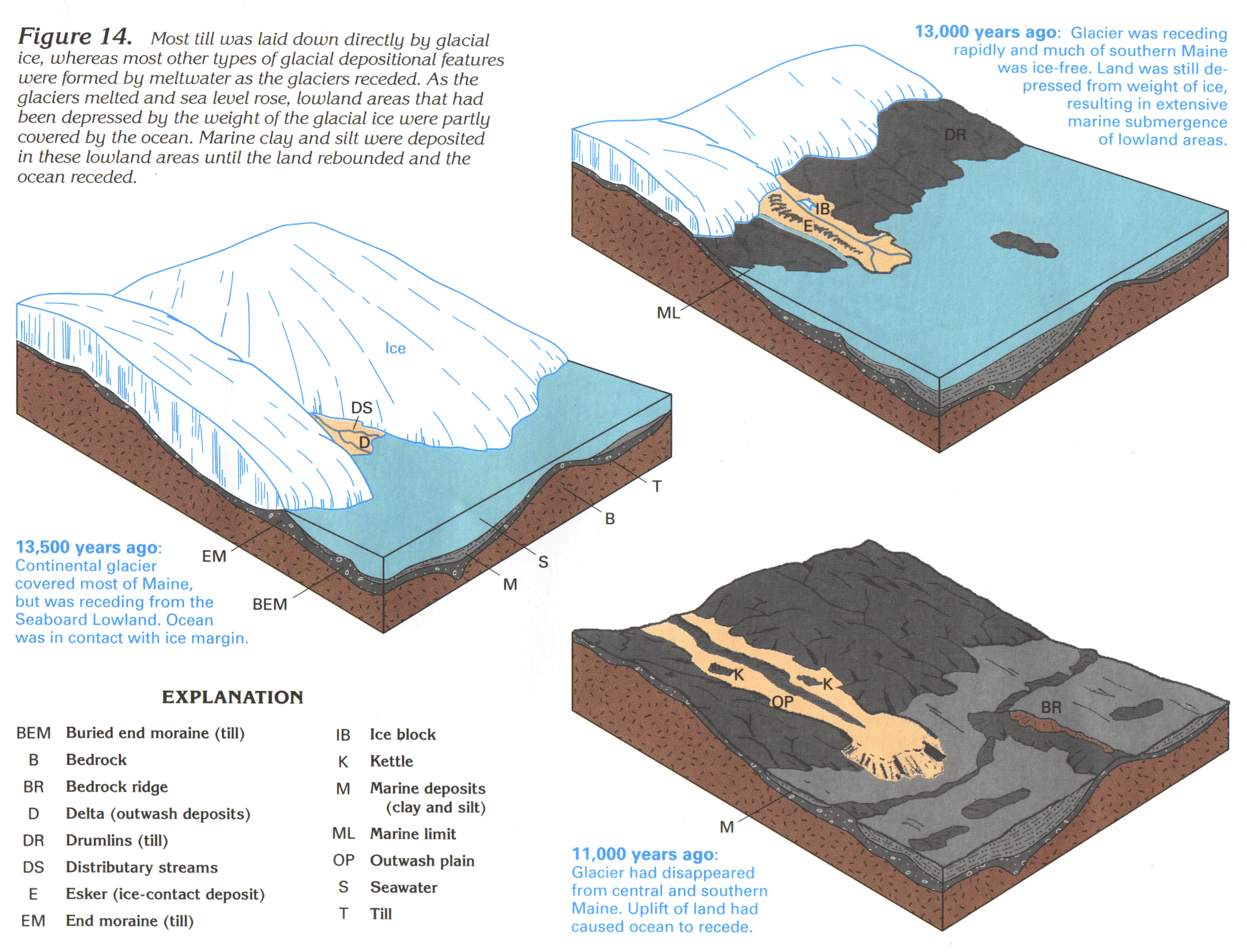Glacially Derived Aquifers:
The surficial aquifer systems in the Northeast primarily consist of glacial deposits of sand and gravel that were laid down during several advances and retreats of continental glaciers that encroached from the north or northwest. The glacial stage between the most recent advance, which took place about 21,000 years ago, and final retreat, which occurred about 12,000 years ago, is termed Wisconsinan.
Glacial action leaves sediments of highly varying permeability. Contact deposits formed by grinding of of rock beneath the ice (basal till) are generally of low permeability. Outwash sediments, deposited as meltwater carried sediments away from the ice, can be of very high or very low permeability, depending upon the energy of the flow. Sediments deposited in lakes can be very fine clays with extremely low permeability. Sediments deposited by streams can be sand and gravel, and have extremely high permeability.
In general, in areas where water flowed away from the glacier deposited sediments are of higher permeability than in areas where water was blocked or pooled at the base of the ice due to the depression of the land surface under the weight of the glacier.
